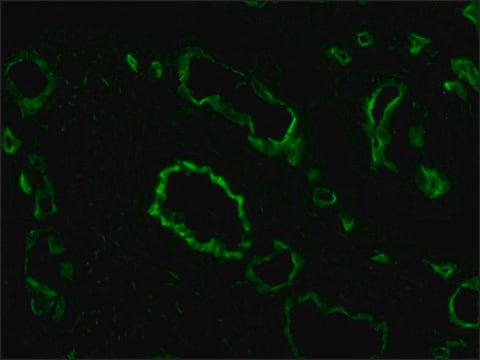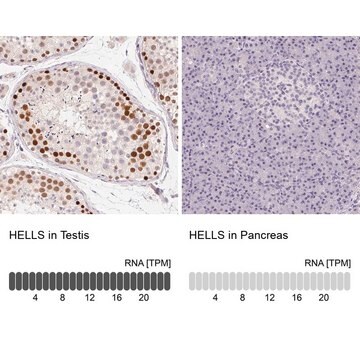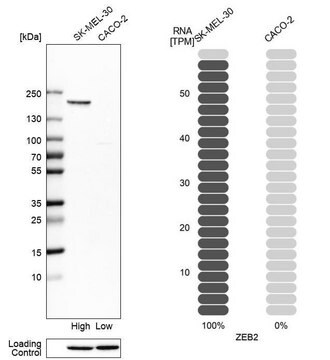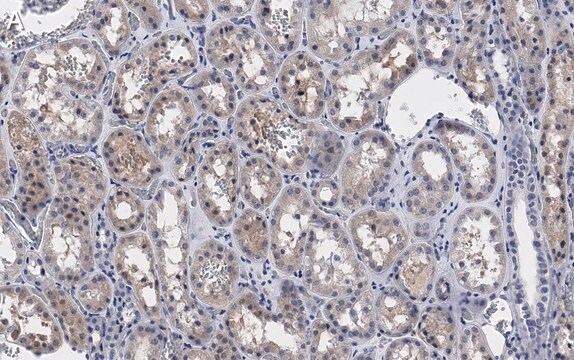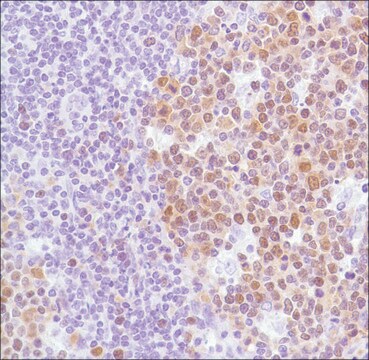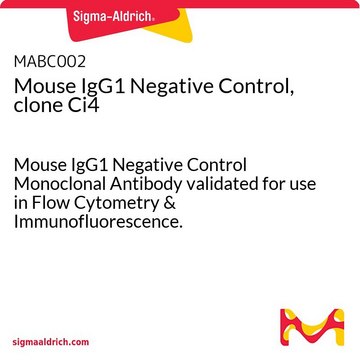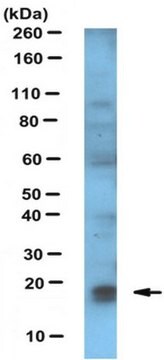SAB4200854
Anti-FAT10 antibody, Mouse monoclonal
clone FAT10-7, purified from hybridoma cell culture
About This Item
Produits recommandés
Forme d'anticorps
purified from hybridoma cell culture
Niveau de qualité
Clone
FAT10-7, monoclonal
Forme
liquid
Espèces réactives
human, mouse
Concentration
~1 mg/mL
Technique(s)
immunoblotting: 4-8 μg/mL using whole lysate of human hepatocellular carcinoma HepG2 cells
Isotype
IgG1
Numéro d'accès UniProt
Conditions d'expédition
dry ice
Température de stockage
−20°C
Modification post-traductionnelle de la cible
unmodified
Description générale
Spécificité
Application
Actions biochimiques/physiologiques
FATylation has an important role in many cellular processes varied from cell maintenance to DNA repair. Understanding FAT10 mechanism and finding its downstream substrates is important to reveal its potential role in inflammation-induced tumorigenesis.1-7
Forme physique
Stockage et stabilité
Clause de non-responsabilité
Code de la classe de stockage
12 - Non Combustible Liquids
Classe de danger pour l'eau (WGK)
WGK 1
Point d'éclair (°F)
Not applicable
Point d'éclair (°C)
Not applicable
Faites votre choix parmi les versions les plus récentes :
Certificats d'analyse (COA)
It looks like we've run into a problem, but you can still download Certificates of Analysis from our Documents section.
Si vous avez besoin d'assistance, veuillez contacter Service Clients
Déjà en possession de ce produit ?
Retrouvez la documentation relative aux produits que vous avez récemment achetés dans la Bibliothèque de documents.
Notre équipe de scientifiques dispose d'une expérience dans tous les secteurs de la recherche, notamment en sciences de la vie, science des matériaux, synthèse chimique, chromatographie, analyse et dans de nombreux autres domaines..
Contacter notre Service technique